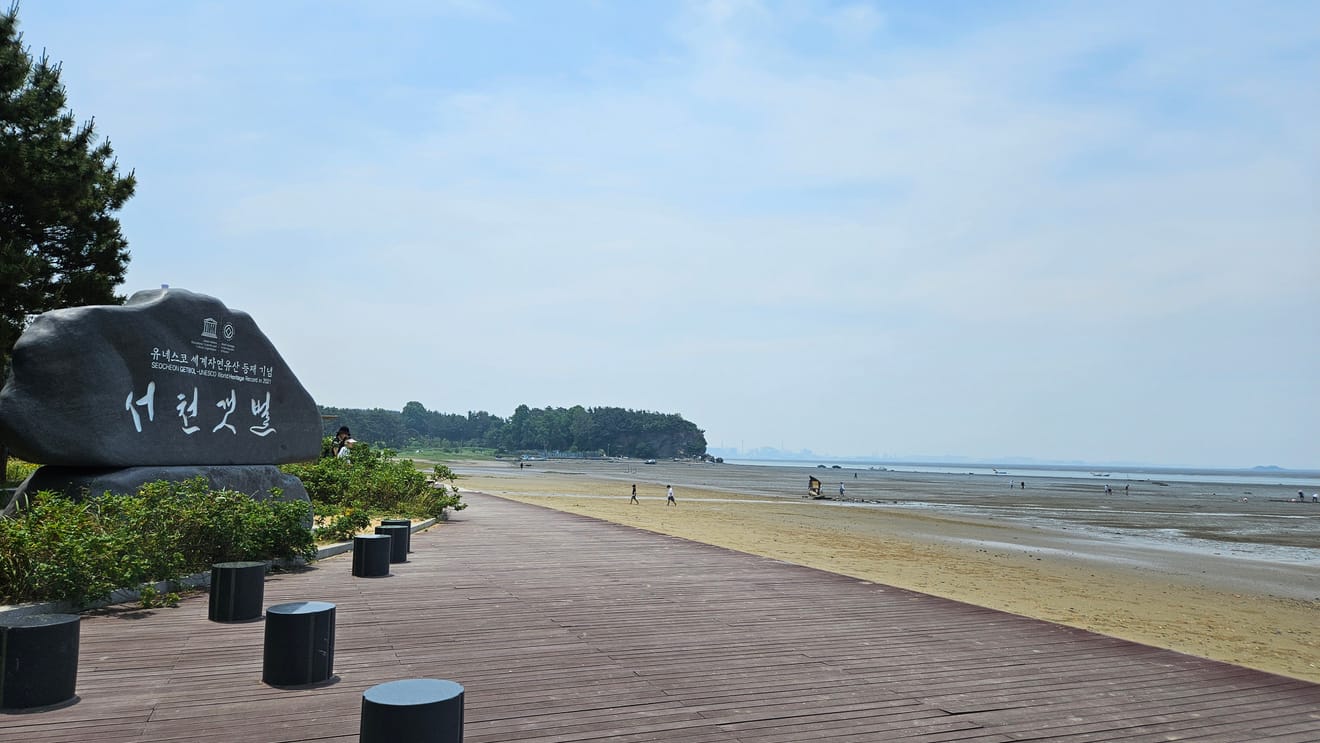Subject
- #Value of Tidal Flats
- #Resources of Tidal Flats
- #Tidal Flats
- #Ecology of Tidal Flats
- #UNESCO World Heritage
Created: 2024-06-25
Created: 2024-06-25 12:10
Tidal flats refer to coastal areas that are periodically submerged and exposed by the tides. They are typically composed of various sediments such as sand, mud, and rocks, and serve as a treasure trove of ecosystems and a buffer zone that protects against natural disasters.

Seocheon Tidal Flat, Registered as a UNESCO World Heritage Site
First, tidal flats are a crucial component of the marine ecosystem. Numerous species inhabit these areas, and their interactions maintain a balanced ecosystem. Representative organisms include crustaceans such as clams, crabs, and shrimps, as well as fish and birds. These creatures serve as a food source for humans, significantly contributing to our diets, and play a vital role in maintaining the health of the marine ecosystem.
Next, tidal flats act as a buffer zone against natural disasters. When natural disasters like floods or typhoons occur, tidal flats mitigate damage by reducing the flow of water. They also prevent coastal erosion and mitigate the effects of sea-level rise.
Finally, tidal flats possess significant value as a tourist attraction. Their beautiful scenery and diverse wildlife attract numerous tourists, and they serve as a platform for ecological education and research.
The tidal flat ecosystem is composed of a variety of members.
Benthos refers toanimals that live on the seabed, primarily including crustaceans such as clams, crabs, and shrimps, as well as mollusks and annelids. They form the foundation of the tidal flat ecosystem's food chain and play a vital role in maintaining the health of the tidal flats by decomposing organic matter.
Halophytesare plants that thrive in saline soils, with representative species including Salicornia europaea, Suaeda maritima, and Suaeda japonica. They stabilize the soil of tidal flats and absorb atmospheric carbon dioxide, contributing to climate change mitigation. They also produce oxygen through photosynthesis, supporting the respiration of surrounding organisms.
Fish feed on benthos or halophytes, while birds prey on benthos or fish. They circulate energy through the tidal flat ecosystem's food chain and contribute to maintaining ecological stability through population control.
Engage in various activities on tidal flats, such as harvesting seafood and enjoying recreational activities. However, if these activities become excessive, they can disrupt the balance of the tidal flat ecosystem, so caution is necessary.
Tidal flats play a very important rolein the global environment.
Tidal flats hold various economic values.
International cooperation and efforts are crucial for the preservation and sustainable use of tidal flats.
As part of this effort, the International Union for Conservation of Nature (IUCN) has been selecting and listing the ‘Top 100 Tidal Flats’ since 1998, striving to raise awareness about the importance and conservation value of tidal flats. The Ramsar Convention is also an international treaty for the protection of wetlands, adopted in Ramsar, Iran, in 1971 and entered into force in 1975. Currently, 170 countries worldwide are parties to the Convention, and South Korea joined as the 101st member in 1997.
The South Korean government has also made efforts, including enacting the Wetland Conservation Act (1999), joining the Ramsar Convention (1997), and deciding to halt the Saemangeum Reclamation Project (2010). In July 2021, the Seocheon, Gochang, Shinan, and Boseong-Suncheon tidal flats were designated as UNESCO World Heritage Sitesgaining international recognition for the value of tidal flats.
Comments0